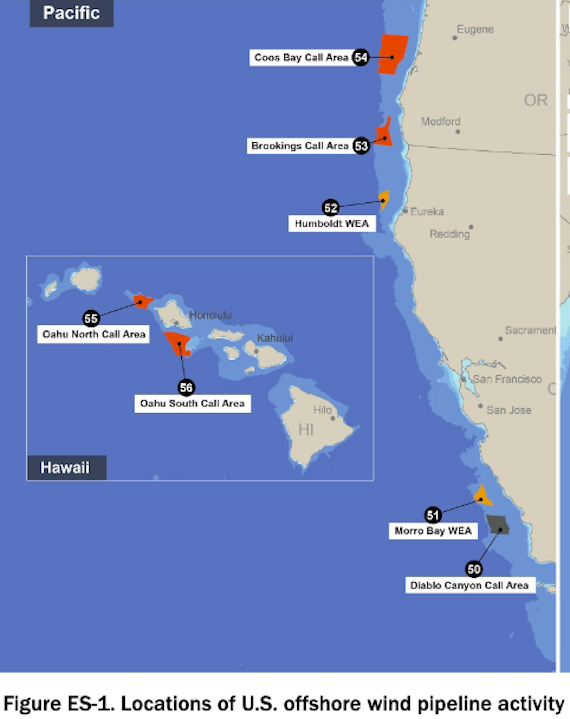Ann Arbor (Informed Comment) – City News Service reports that Long Beach is planning a 400-acre facility to manufacture and install offshore floating wind turbines off the coast of California. The port has many advantages in this regard, being a deep water port with a federal sea breaker. Each of the wind towers it plans to build will generate 20 megawatts of power, which means 50 of them would generate a gigawatt, about the same nameplate power generation as you would get from a small nuclear plant. Offshore wind turbines turn more steadily because there tends to be a lot of heavy wind over the ocean out there, so those fifty turbines would probably get pretty near actually generating a gigawatt. The development is expected to be a job magnet for the region.
The wind energy is ramping up for a big expansion now that supply chain problems, coming off the pandemic, have almost entirely subsided.
The federal Bureau of Ocean Energy Management let bids last December for $757 million in offshore leases off California. Those areas of the Pacific are estimated to be capable of generating 4.6 gigawatts, explains Kavya Balaraman at Utility Drive.
The Biden administration is hoping for 30 gigawatts of new offshore wind power by 2030. This ambition is dwarfed by that of the states, who want 83 gigawatts of offshore wind as things stand today. More states are jumping on this bandwagon every day. Maryland just announced its ambitions for 8.5 gigawatts, according to Ros Davidson at Windpower Monthly. The Atlantic coast is the most advantageous area for wind turbines in the US, though there is also power to be generated in the Gulf of Mexico. California’s potential is not as great, because its waters are so deep.
The Department of Energy explains, “More than half of the Nation’s offshore wind resources occur above deep-water ocean areas. Traditional, fixed-bottom, offshore wind turbine foundations are not economically feasible in these deep-water areas. Floating wind turbines have potential, but floating turbine technology is newer and less deployed worldwide than that of fixed-bottom foundations. Floating wind turbines can help harness offshore wind energy that was once thought unattainable above deep ocean waters, especially in the Pacific.”
The companies that bid on that ocean acreage are eager for California to develop supportive port facilities. You need wind turbine manufacture and a means of getting the turbines out to the ocean and setting them up there. The Pacific is deep off California, so you can’t have wind turbines anchored to the ocean floor they way you can off New York and New Jersey. They have to be able to float.
Scotland has already developed a floating wind farm, Hywind, which generates 30 MW and can power 35,000 homes. Hywind was a demonstration project, showing that such wind farms could be installed and function steadily, and that there were ways to cut costs substantially.
Balaraman quotes North America CEO of Ocean Winds Michael Brown as saying, “What we’ve seen from Europe and also in the East Coast is that early investment in ports can really attract the supply chain.”
Mr. Brown, say hello to Long Beach.



 © 2025 All Rights Reserved
© 2025 All Rights Reserved